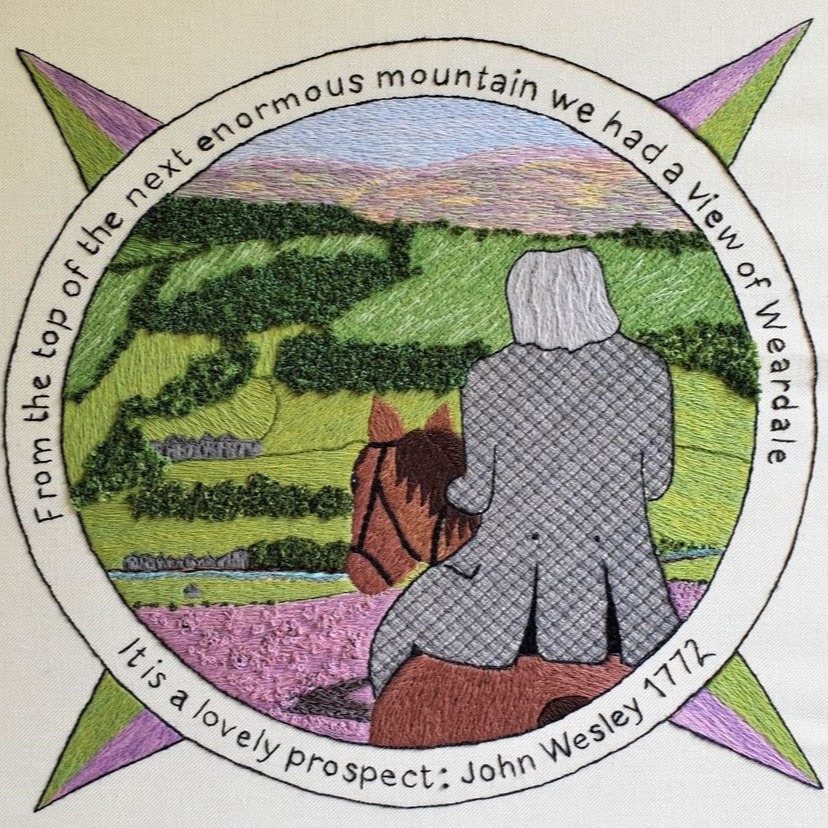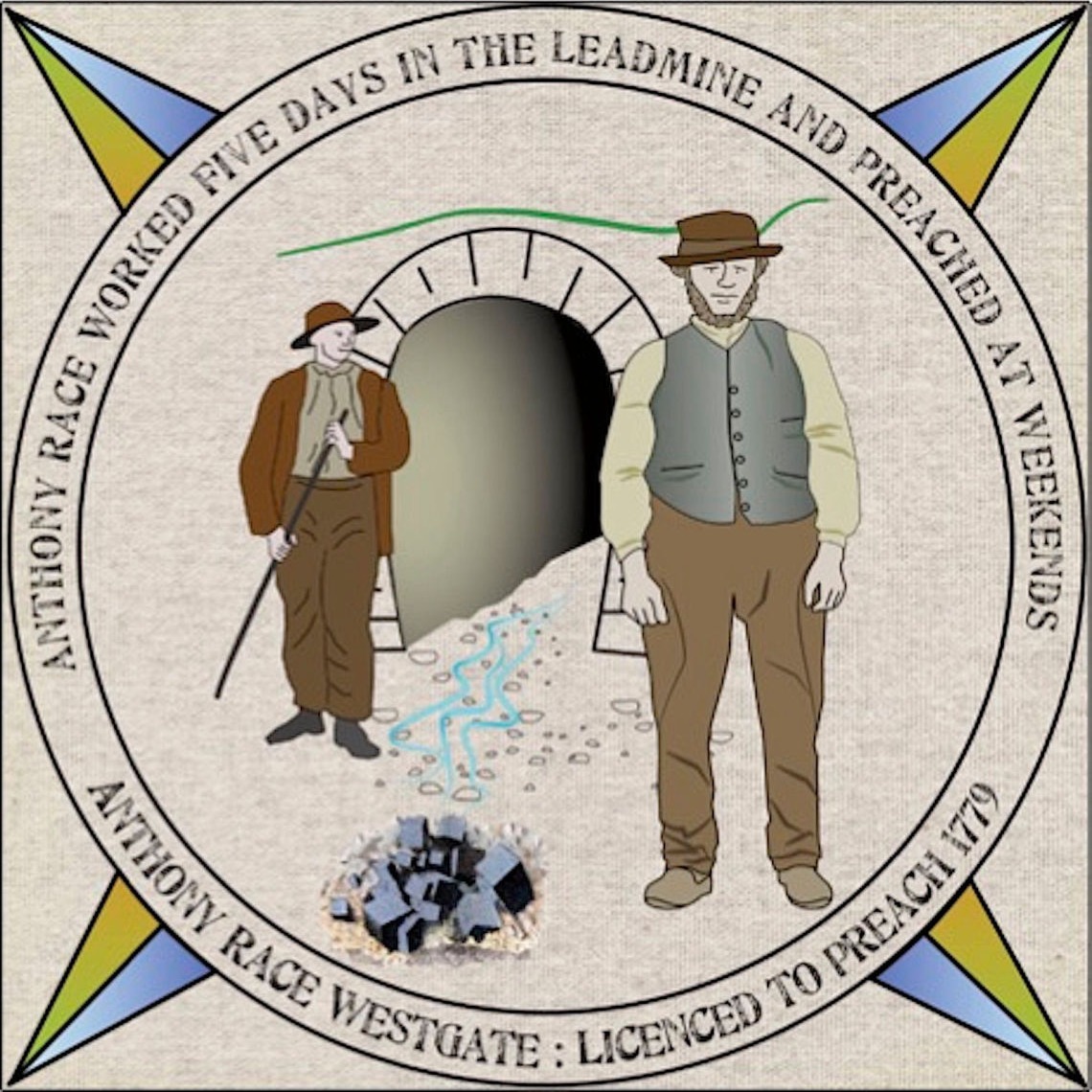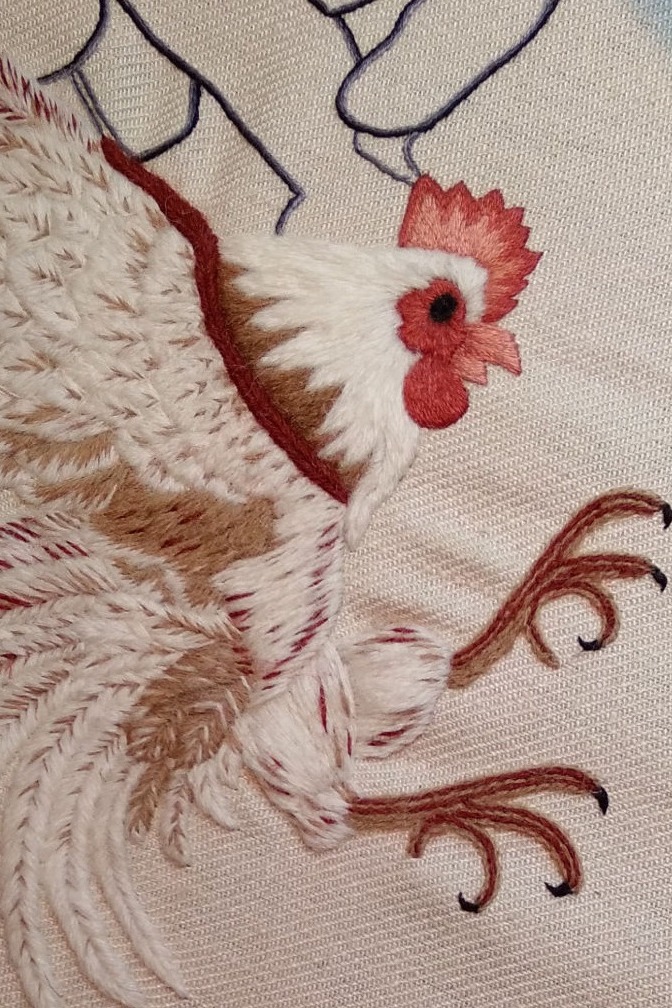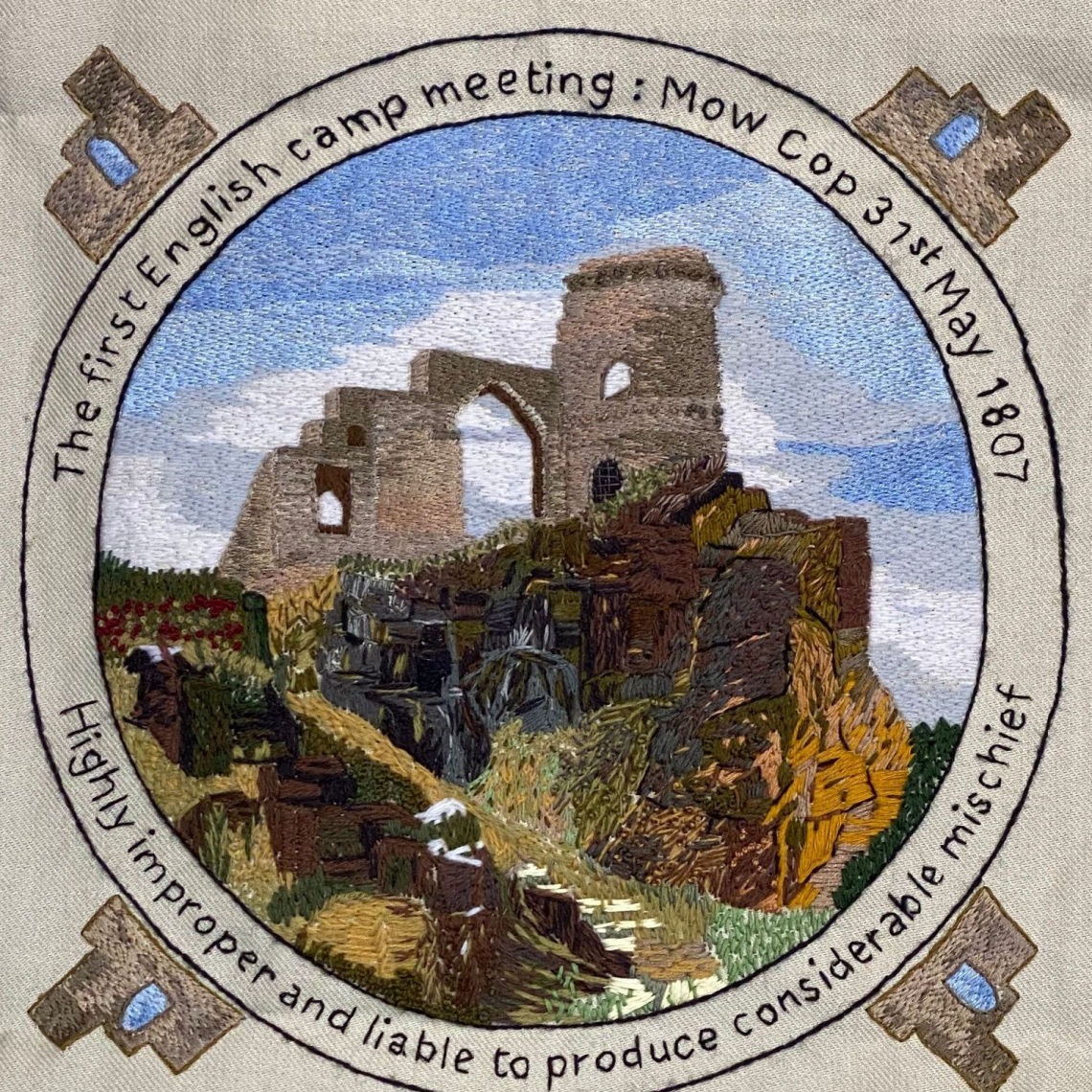Planning & Early Stages
Fired with enthusiasm, David spoke to Allan Percival, the Trustee Lead for the overall development project, who then approached members of the Durham branch of the Embroiderers’ Guild (now known as Stitch 2 Durham). David and Allan met with their Committee, and, as the group generally undertakes at least one large community stitching project a year, several in the group decided that they would take on designs and bring them to life. David and Allan were also given advice and suggestions for where to look further, including an introduction to Tracy A Franklin, an RSN tutor and Head Broderer at Durham Cathedral. Tracy kindly agreed to become the Technical Advisor for the project and helped to set up the initial panels ready for stitching.
Having determined the Tapestries Collection should become a project in its own right, David and Allan recruited Liz Walsh to act as Co-ordinator for the Methodist Tapestries Project. The Methodist Heritage Department expressed enthusiastic support for the Project and a launch date in March 2020 was set. Then, just when things were beginning to get going, Covid-19 arrived, and many things had to be put on hold. During the various lockdowns the team kept things going as best they could, and gradually it became possible for more of the panels to be distributed to the stitchers who had requested them.
A Facebook page was started, and so it became possible to spread the word about the Methodist Tapestries Project to a wider audience. Some just wanted to see photos of beautiful embroidery, others were interested in the history, the designs or the techniques used, and others still wanted to know how they could participate themselves.



